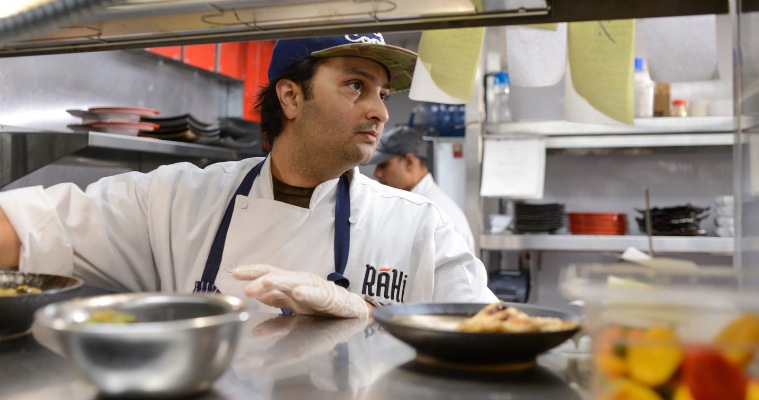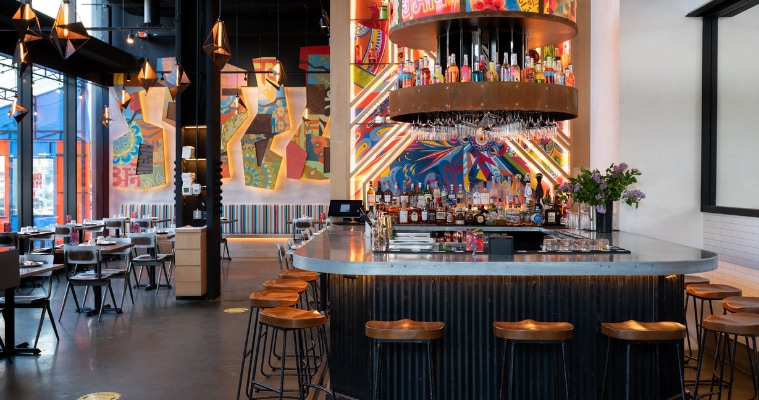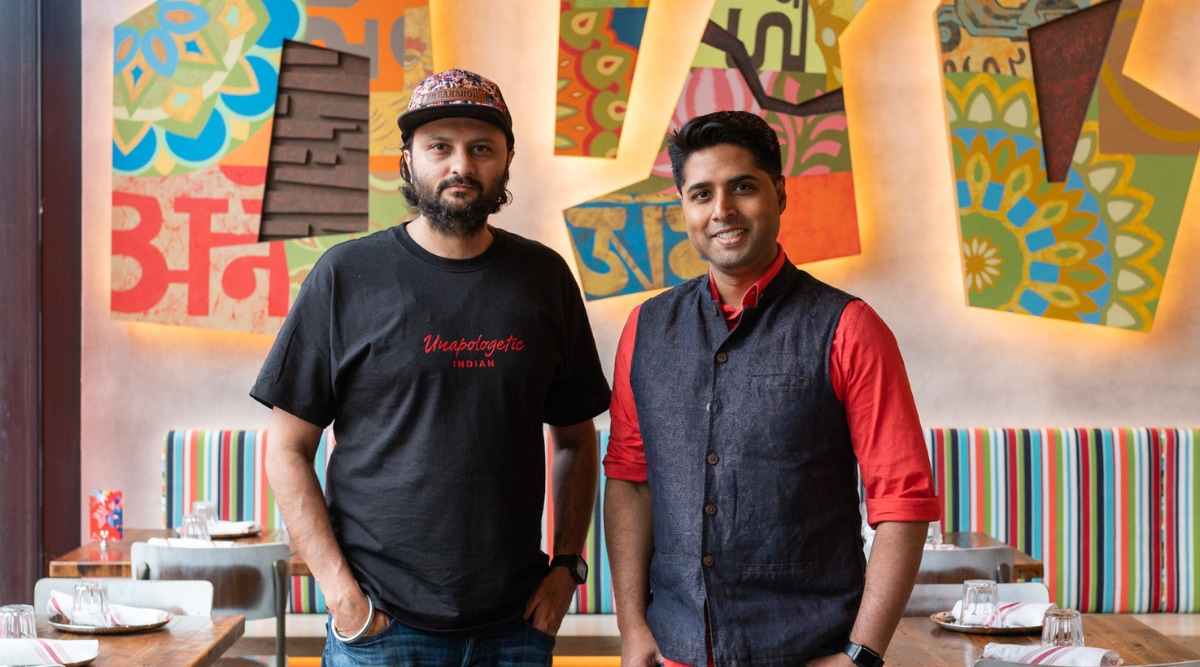These restaurateurs want everyone in America eating Indian food
Written by Priya Krishna
Ten years ago, Roni Mazumdar cautiously added a Bengali dish from his childhood — a beet, carrot, potato and pea cutlet called vegetable chop — to the menu of his restaurant, Masalawala, on Manhattan’s Lower East Side.
“No one would buy it,” Mazumdar said. “I remember the batches that would go bad, and after two weeks, we were like, ‘Why are we wasting? We might as well do chicken tikka masala.’ ”
When he and chef Chintan Pandya opened Rahi in Greenwich Village in 2017, Mazumdar thought they needed to go contemporary, serving truffle khichdi and smoked salmon chaat. The place was less about showcasing Indian food and more about following culinary trends, Mazumdar said.
But with the openings of Adda in Long Island City in 2018 and Dhamaka on the Lower East Side in February, the partners stopped trying to adhere to an existing narrative, and started writing their own. They put India’s bold, regional flavors front and center, rather than hiding them behind truffles or tikka masala.
A number of restaurants, like Ghee Indian Kitchen in Miami and Besharam in San Francisco, have won followings for their focus on regional Indian cuisine. But few have done so at the scale that Mazumdar and Pandya are aspiring toward.
 Chintan Pandya in the kitchen of Rahi in New York, Feb. 24, 2018. (Source: Casey Kelbaugh/The New York Times)
Chintan Pandya in the kitchen of Rahi in New York, Feb. 24, 2018. (Source: Casey Kelbaugh/The New York Times)
From the aromatic Lucknow-style goat neck biryani at Adda, to the fiery, pork-and-herb-laden Meghalayan doh khleh at Dhamaka, the food at these restaurants speak in exclamation marks. Both places earned glowing reviews from critics, and Pandya received a James Beard award nomination in 2020.
As the country opens back up, Mazumdar, 38, and Pandya, 41, are planning an aggressive expansion in New York this year. It will include two fast-casual restaurants in the East Village, Kebabwala and Rowdy Rooster; a new location and menu for Masalawala; and a reimagined Rahi, inspired by incoming chef Vijay Kumar’s South Indian heritage. Adda will also move to a larger location about a mile away and plans to get its liquor license.
The partners’ ultimate goal is to expand well beyond New York.
“Until we really reach the heart of the country,” Mazumdar said, “I don’t think we can really move Indian cuisine forward.”
But opening an Indian restaurant is complicated. Americans expect to pay less for tandoori paneer than they would a burrata salad, and to dictate the level of spiciness, said Pandya.
“Have you gone to your home and asked your mother, ‘Can you make a chicken, on a scale of 1 to 10 spice level, a 5?’ ” he said.
“We are stopping this idea of catering to every other person but the Indian palate,” added Mazumdar.
Pandya has long wanted to start a fast-casual Indian restaurant with a national reach, and is inspired by the popular New York taqueria, Los Tacos No. 1. (Curry Up Now is a successful Indian street food restaurant with locations across the country.)
 Dhamaka, which opened in February, in New York, May 5, 2021. (Source: Emon Hassan/The New York Times)
Dhamaka, which opened in February, in New York, May 5, 2021. (Source: Emon Hassan/The New York Times)
“It is a phenomenal product,” he said of Los Tacos No. 1.
The first of the team’s fast-casual restaurants, the fried chicken-centric Rowdy Rooster, opens in August on First Avenue and Ninth Street. Pandya is studying the numerous Indian iterations of fried chicken, from pakoras to Chicken 65, a spicy snack that supposedly originated in a hotel in Chennai. A month later comes Kebabwala, on Second Avenue and Fifth Street, which will focus on classic kebab preparations like chicken tikka and seekh kebabs.
At Rahi, Kumar, 39, who was recently the chef of Rasa in Burlingame, California, will introduce a menu of regional southern Indian food in September. He grew up in Natham, a village in Tamil Nadu, with dishes like maan kari, venison with coconut, curry leaf, coriander, cumin and star anise; and blood poriyal, made by cooking nutrient-rich goat blood with turmeric, cumin, lentils and coconut. He said he wants to show diners that southern Indian food is more than just dosa and idli.
Opening in November, the revamped Masalawala in Park Slope, Brooklyn, on the corner of Fifth Avenue and Fifth Street, will venture into retail, selling staples like basmati and atta, along with spice blends and sauces. It will also offer an all-day menu of regional Indian comfort food like pigeon Chettinad seasoned with star anise and coriander, and patrani macchi, a Parsi dish of fish steamed in banana leaf.
“There have been two very specific angles to Indian food” in restaurants, Mazumdar said. “One side has been this idea of higher-end cuisine, which automatically has to be with foreign ingredients,” the other “the generalization of Indian cuisine.”
Building a deeper understanding of Indian food among all Americans won’t happen with just one restaurant group, he said.
But perhaps they can make the path a little smoother for the next Indian restaurant.
This article originally appeared in The New York Times.
For all the latest lifestyle News Click Here

